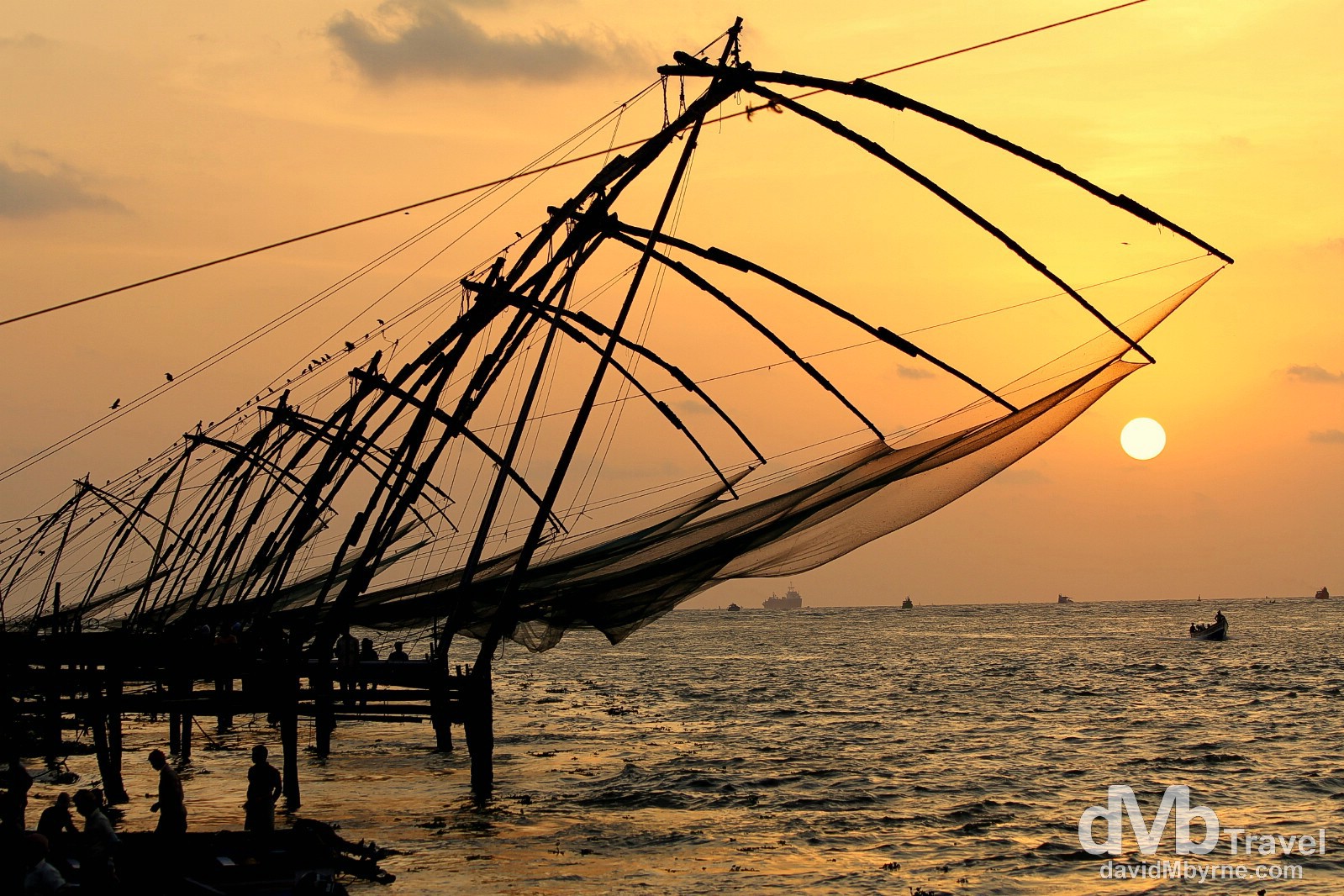It’s pretty safe to say that Fort Kochi (Cochin) in the Indian state of Kerala is a place steeped in history – it was a spice trade centre for over 3,000 years & it was here that European colonisation of India first took root. In many places present-day Fort Kochi (Cochin) remains a living homage to its varied colonial past.

There are many reasons for paying a visit to this northern section of the southern Indian state of Kerala, but one of the undoubted highlights of the visit for me was seeing the massive cantilevered Chinese fishing nets that dot the northern tip of Fort Kochi (Cochin). A legacy of Chinese traders from around 1400 AD & the unofficial emblem of the Kerala coast, these enormous spider-like contraptions require the muscle of at least 4 grown men to operate the counterweights. However, their best days are behind them – modern fishing techniques are rendering the nets less & less profitable but thankfully no less photogenic at sunset. Fort Kochi (Cochin) (![]() ), Kerala, India. September 19th 2012.
), Kerala, India. September 19th 2012.

Fishing catch being analysed at the tip of Fort Kochi (Cochin), Kerala, India. September 19th 2012.
European Colonisation of India || Where It All Began
With the arrival of Vasco da Gama, the first European explorer to arrive in India in 1498, the Portuguese were the first to discover a direct sea route between Lisbon and Kerala thus marking the beginning of European colonisation in the country. Soon the Dutch, French, Italians and British were all lured here by the wealth of spices and silk and came with the intention of forming colonies. It wasn’t long before the colonisers began leaving their mark on the new land.

This is a picture of the St. Francis Church. Dating from 1503 AD & said to have been constructed by Portuguese Franciscan friars who accompanied the first Portuguese expedition, it was the first European church built in India. Originally constructed of wood, it was rebuilt in stone in the mid-16th century. Vasco da Gama himself was buried here in 1524 but his remains were moved some 14 years later, in 1538, & shipped to their present resting place in Lisbon, Portugal (his empty grave is still marked inside the musty church). Fort Kochin (Cochin), Kerala, India. September 18th 2012.
Trading Hub

Unloading activity on Bazaar Road, Forth Kochin (Cochin), Kerala, India. September 18th 2012.
In any given century this region teemed with traders from around the world – Arabs, Romans, Moors, Chinese and the aforementioned Europeans, among others. The stories they brought home of street bazaars overflowing with spices, silk and gold made the Kerala coast world-famous. Kochi is no longer an international trading post but the air remains thick with history and the smells of cardamom, pepper and ginger for sale in the spice shops. Trading still goes on as it did centuries ago, particularly by the busy waterfront spice warehouses on Bazaar Road.

Exports on Bazaar Road in Forth Kochin (Cochin), Kerala, India. September 18th 2012.

Bazaar Road, Forth Kochin (Cochin), Kerala, India. September 18th 2012.

Smiles & waves out the back of a tuk-tuk on Bazaar Road in Forth Kochin (Cochin), Kerala, India. September 18th 2012.
______________________________________________________
